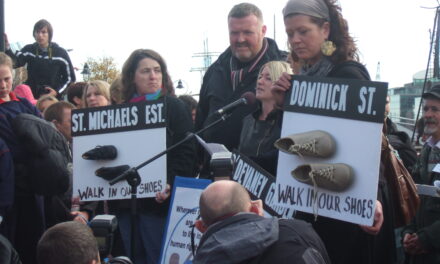“I had thirteen children hanging out of my car one time and the guards stopped us. ‘Where are ye going?’ one of them roared. Luckily, one of our team managers was a guard – he said ‘Do no more about it. He’s taking children off the road.’” – recalls Billy Grehan. Above: Billy and Margaret attending a match.
Accolades have been heaped on two local celebrities – Limerick city couple Margaret and Billy Grehan who have coached youngsters for over 40 years. They brought national fame to Granville Park where they have lived for most of their lives. Billy is now 82 years of age and the couple still turn out to support local teams.
As Pat Hannon, one of their fans put it, “People tend to pay compliments to great people after they have passed on” whereas he wanted to “acknowledge their contribution” while they are both alive and well.
His online tribute sparked a flurry of responses thanking the super-duo who led many a youth team to victory on the soccer pitch.
Here, Margaret and Billy’s grandchild Brooke Grehan (while on placement with ‘Changing Ireland’) interviews them about: why they volunteered, the difference it made, and female participation in sports:
Margaret and Billy have been resident in Granville Park, Limerick, for well over 40 years. They are best known for their devotion to their club Granville Rangers FC which they helped to found in 1975. I interviewed them about the joy of coaching, clashes with the Gardai, the difficulties clubs today face regarding volunteers and rising participation of females in soccer.
Asked why people should become coaches, Billy said, “I’ll tell you why I did it. I wanted to give back to the children under me what I got when I was growing up from my coaches and to be able to pass my knowledge onto them.”
Funnily enough, Billy and Margaret never had any difficulty getting people to volunteer with Granville Rangers, but transport was a real issue.
Billy said, “Granville was never short of volunteers. We had two people for every team. But only two of us had cars and we had to drive them around everywhere.”
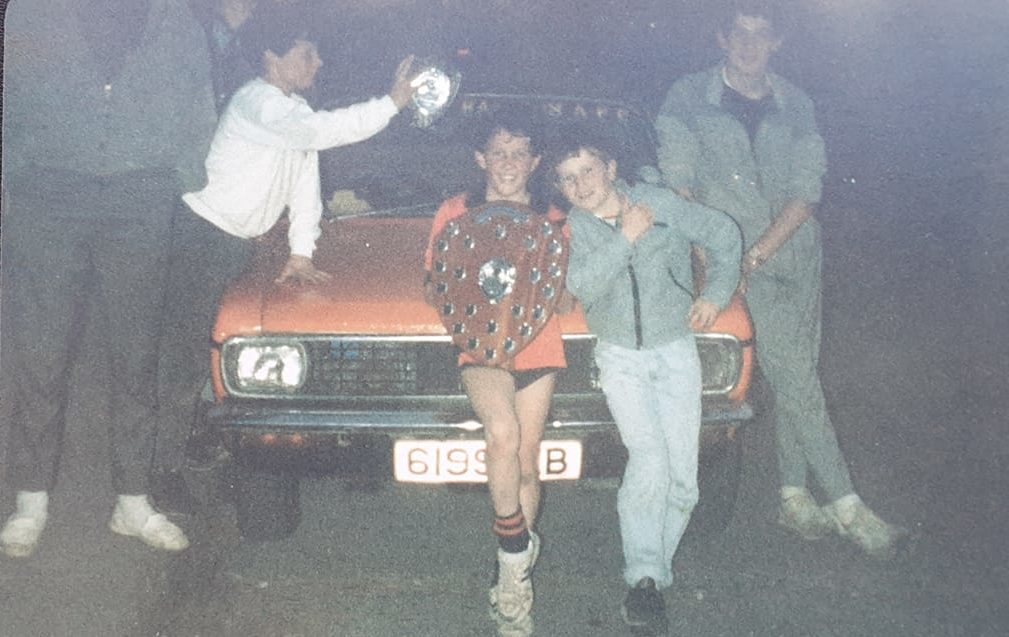
• Billy and Margaret’s once white Hillman Avenger had a black roof that was sprayed orange to match the club colours. The car was centre stage as seen here in a celebration of another win. “It was always an adventure going into town in this car,” recalled son Margaret and Billy’s son Tony.
“I had thirteen one time hanging out of my car, bringing them home from a match, and the guards above at Childers Road stopped us. ‘Where are ye going?’ one of them roared at us. Luckily, one of our team managers was a guard and he was a great lad. He got on the phone and rang the guard who’d stopped us and he says, ‘Listen here! I know this man you’re after stopping and do no more about it. He’s taking children off the road.’”
As Brian Hinchy (one of those who joined in paying tribute this week) said, “Legends don’t come along too often but when two come at the same time that is to be cherished.”
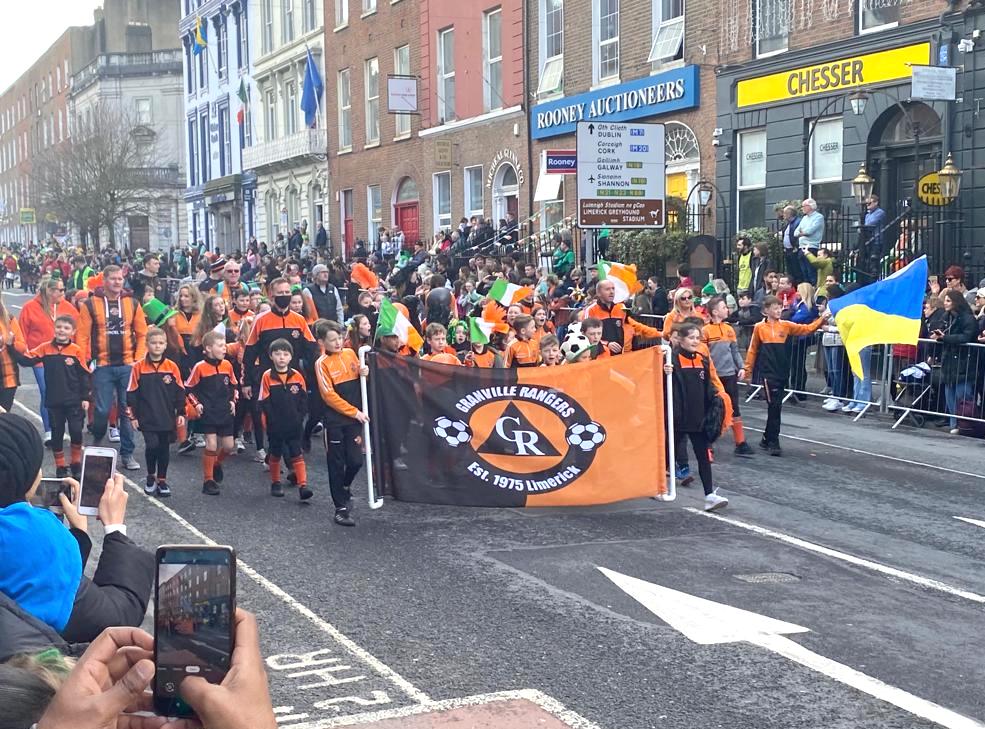
• Granville Rangers FC players and coaches marching in Limerick’s St. Patrick’s Day Parade in 2022.
Did Granville Rangers improve the community?
The pair agreed, “It did”. Margaret continued: ‘We had sports days, different tournaments with different estates. and it occupied the children and they weren’t hanging around the streets. Most evenings we’d meet up, so it helped in that sense”
B: ‘When we were on the estates, all the children and all parents got involved and then they were all above in the hall. The Church hall every Sunday night, playing the Match of the Day music, all dressed up in their colours and playing. We had great tournaments”
M: “They were all 5-a-side and all called different English teams; Liverpool, Man United, Man City and all that. And it ran for weeks and then it went to quarter finals, semi finals and finals.”
B: “And all the parents were there – it was great.”
M: “A brilliant atmosphere.”
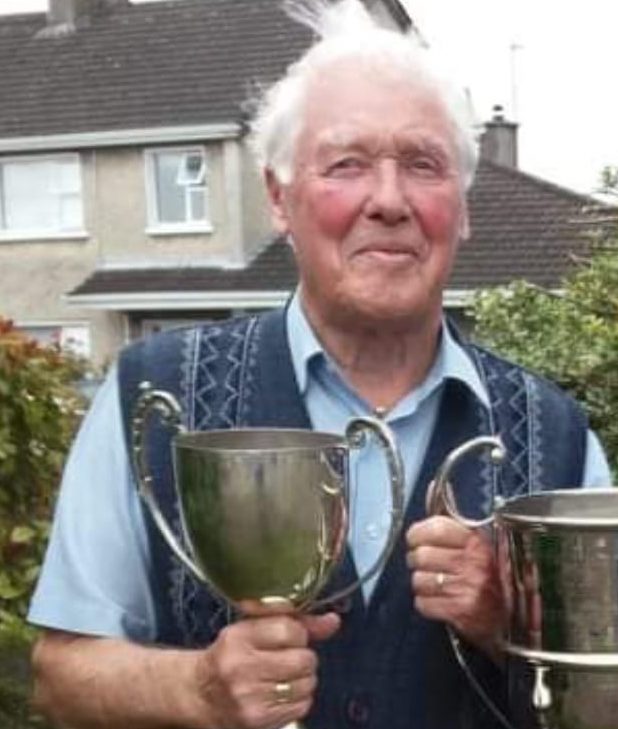
• Above: Billy Grehan with silverware in 2020. John Quinlivan from Limerick said, “Billy saw us through the good and the bad times which is what sport is all about. They don’t make Billys like they used to.”How many girls’ soccer teams were there in limerick back then?
B: “Jesus there were very few wasn’t there?”
M: “Girls soccer is only there in the last 20 years that’s all. There was no competition for girls soccer there was only community games and almost every parish would have a girls soccer team in community games.”
Is there a Granville Rangers girls soccer team?
M: “Yes, just since last year.”
What are the main challenges for getting more females into soccer today?
M: “I think the main challenge is trying to get the parents involved as well – that’s the difficult thing. Most parents are working different shifts. But they’re making progress with the girls teams now.”
In your opinion is there a lack of interest in girls’ sports teams?
M: “Not so much now, there was I think in earlier stages but then the girls started playing with the boys up to U12. So that helped getting the girls involved in that but now they have their own age groups. And they’re making big progress now, I think most clubs have a girls soccer team or more than one with different age groups. So it has come on a lot.”
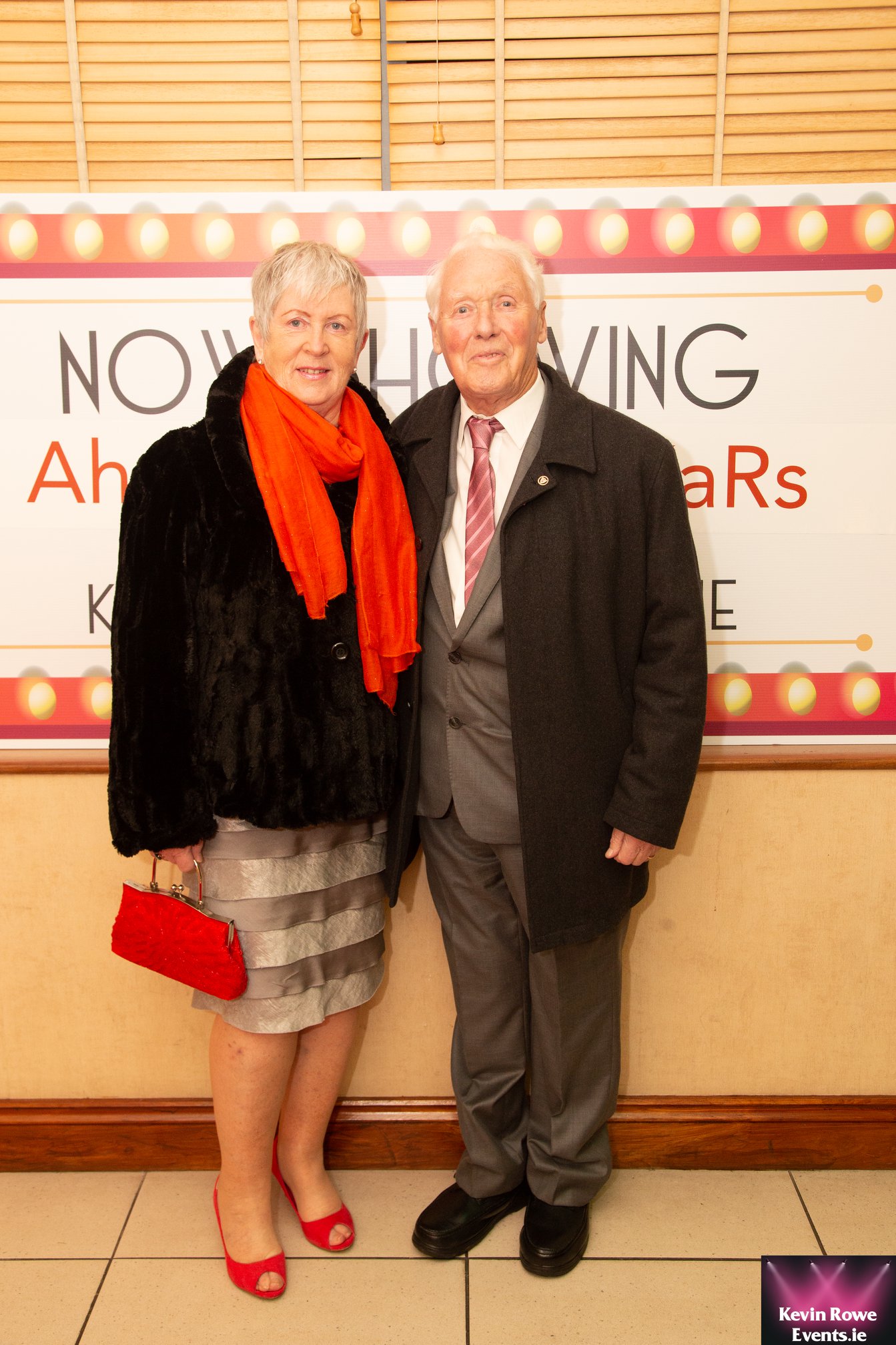
• The glamorous couple in 2019.
NATIONAL TARGETS FOR GIRLS IN SOCCER
– FAI wants 50,000 more female players by 2025
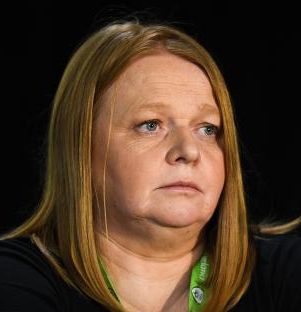
• FAI board member Ursula Scully. Source: FAI.
The Football Association of Ireland (FAI) aims to increase the number of female players by 50,000 (and increase the number of male players by 28,500) by 2025, bringing the total number of soccer players in the ROI to 300,000.
The association’s current strategy also seeks to have 40% female representation across the FAI board, its general assembly and committees by end of 2023.
In recent years, the association has begun running female-only coaching courses and leadership training programmes for women. FAI board member Ursula Scully, from Nenagh, Co. Tipperary, said participation rates by females are improving and it’s something she has witnessed at local level.
She reported to the FAI: “For example, during my time involved we went from running girls’ leagues within my local league at U12s, U14s and U16s to now running leagues at every age group from U10s up to U18s.”
Last year, on International Womens’ Day (March 8th) last year, she said of female participation, “A clear pathway where players can progress to the very highest levels in the game is vital. “
“Participation is key to the game. Growing the game at the grassroots level through schools and clubs exposes more girls to the game and provides them with more opportunities to play longer and more competitively,” she said.
Ultimately, Ms. Scully wants to see a professional national soccer league for women established and “participation levels in the grassroots game that match that of the boys and men”.




